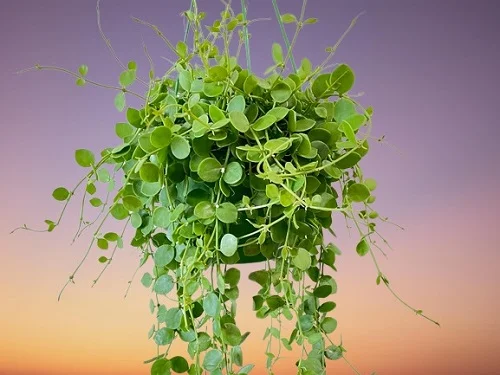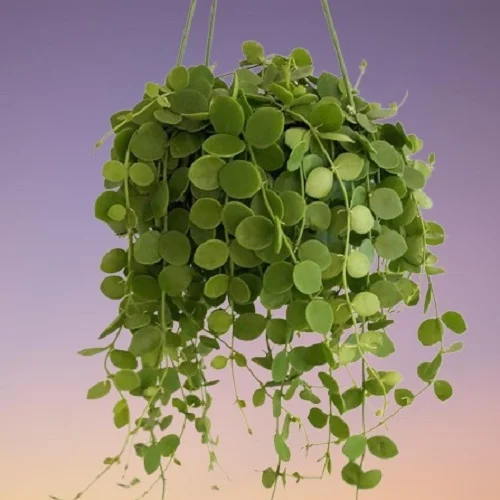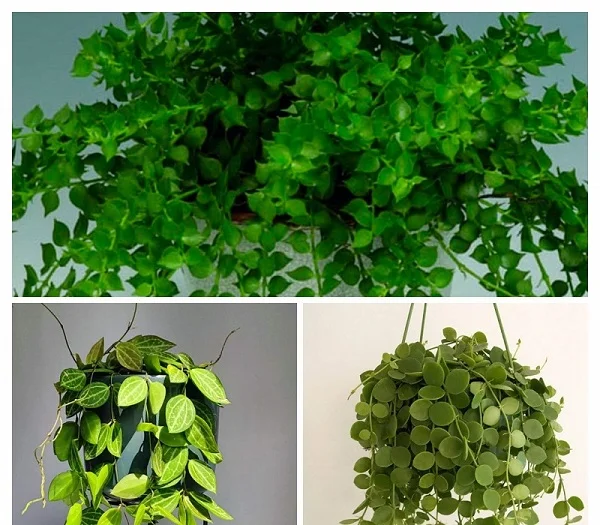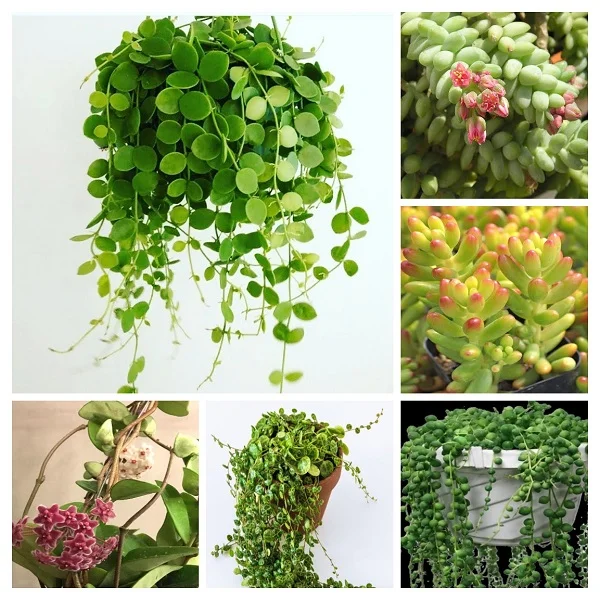12 Reasons for String of Nickels Plant Yellowing Leaves and How to Fix Them
Some links in this post may be affiliate links
String of Nickels Plant (Dischidia nummularia) leaves may turn yellow due to inconsistent watering, soggy soil, too little light, cold drafts, nutrients deficiency, pests infestations, root-rot among others.
Dischidia nummularia thrives in bright light with 4-6 hours of morning sunshine, warmth of 18-260C, humidity of 50-55% and moderately moist, rich, well-drained soil with two feedings in the growing season. Learn how to grow and care for String of Nickels Plant.
If the required conditions are not met, some problems may arise like yellowing and dropping leaves. We have herebelow outlined 12 reasons for yellowing leaves in String of Nickels Plant and their solutions.

12 Reasons why String of Nickels Plant leaves are yellowing & Remedies
1. Nutrients deficiency
Underfeeding your String of Nickels Plant implies that the plant is not getting enough nutrients need for growth and energy. Inadequate nutrients in the actively growing tips causes nutrients to be withdrawn from the older lower leaves which begin to yellow and drop.
How to fix it
Feed String of Nickels Plant twice during the growing season with a slow release fertilizer. Take care to follow the instructions on the label of the plant food.
2. Too little light
Insufficient light implies that the plant cannot make enough food for energy and growth. In an attempt to save energy, the plant begins to die, beginning from the leaves which slowly turn yellow and eventually die. This way, the energy available is saved for the plant's vital functions to keep alive.
How to fix it
Move the String of Nickels Plant to a brighter spot where it will receive bright light with 4-6 hours of morning sunshine or instal grow lights if you do not have adequate natural lighting in your home.

3. Pest infestations
String of Nickels Plant is prone to spider mites, scale insects, aphids and mealybugs. These pests attack the new growth from where they suck the plant sap. This causes the plant to become dehydrated which results in yellow leaves.
How to fix it
- Isolate the affected plant to prevent spread to other plants.
- Treat the plant with an insecticidal soap or neem oil as per the manufacturer's recommendations.
- Regularly check underneath and between the leaves for these pests and carry out timely control measures.
- Maintain the plant well pruned and increase humidity to discourage the pest infestations.
4. Poor quality soil
Poor quality soil does not drain easily and easily becomes compacted and or soggy which will negatively impact the growth of the plant leading to yellowing and dropping of leaves.
How to fix it
Pot your String of Nickels Plant in loose, well-draining soil that is rich in organic matter. Most Cactus and succulents mixes are ideal for this plant.
5. Soggy soil
Too much water in the soil reduces the oxygen concentration in the rootzone which causes the roots to die. This means that the roots cannot take up water and nutrients to the upper parts of the plant including the leaves.
Lack of water and nutrients in the leaves implies that they cannot make enough food needed for growth and energy. Therefore, the plant begins to die causing the leaves to begin turning yellow and dying.
How to fix it
Ensure that the pot has a drainage hole and the soil is fast-draining to prevent waterlogging.
Reduce watering in the cold season to maintain the soil barely moist as growth is minimal at this time.
6. Inconsistent watering
Adequate amount of water are needed for making food enough for growth and energy. Both overwatering and underwatering are detrimental to the growth of the plant. Too much water results in rotting and yellowing while too little water results in wilting and yellowing.
How to fix it
Water your String of Nickels Plant when the top 2-3 inches of soil dry out but never allow the soil to dry out completely. Do not water on a schedule.

7. Cold drafts
Extremely cold temperatures due to cold drafts from windy doors, drafty windows, AC units and others will cause the plant to stop growing and begin to die which starts with the yellowing of leaves.
How to fix it
Keep your String of Nickels Plant away from cold drafts to maintain a warmth of 18-260C. Usually, a room temperature that is comfortable for you is ideal for the plant.
8. Salts buildup
Excess salts in the soil will result in fertilizer burn which will cause the roots to die. This will result in shortage of nutrients and water for making food needed for growth and energy. As such, the plant begins to die; the leaves turn yellow, brown and eventually drop.
How to fix it
Regularly flush out accumulated salts by running a stream of water through the soil until it comes out through the drainage holes and repeat the process several times.
9. Aging
Naturally, the older lower leaves will turn yellow and die to give room for growth of new leaves.
How to fix it
Remove the yellow leaves to maintain the plant neat and tidy. Trim the bare stems at the beginning of the growing season and use them to propagate new plants.
10. Root-rot disease
String of Nickels Plant is prone to root-rot which is enhanced by soggy soil. The disease is indicated by wilted, discolored and yellowing leaves which eventually drop and die.
How to fix it
- Carefully slip the plant out of its pot and inspect the roots; brown-black mushy roots indicate root-rot.
- Trim the rotten roots and treat the healthy roots with a copper-based fungicidal solution as indicated by the manufacturer.
- Repot the plant in fresh, fast-draining soil and a pot that has a drainage hole.
- Place the plant in bright light and stop watering for a few days to give it enough time to recover.
11. Being pot-bound
When a plant is pot-bound, the roots have filled the pot and there is very little soil to hold water when you water. Therefore, the plant cannot take up enough water and nutrients needed for making food for energy to the leaves. Lack of adequate food causes the plant to begin dying; the leaves turn yellow and die.
How to fix it
Check the bottom of the pot for roots growing through the drainage hole.
Repot the String of Nickels Plant into a pot one size larger to provide adequate room for growth or divide it to propagate new plants. Take a look at these succulents pots on Amazon.
12. Repotting shock
Repotting will cause it some shock which may lead to some leaves wilting and turn yellow before it can adjust the new growing conditions.
How to fix it
To minimize repotting shock, water your String of Nickels Plant thoroughly one day before repotting. A well hydrated plant experiences less shock and is easier to divide.
Do not make too many changes at once. For instance, after repotting, maintain the plant in the same location until it is well established before moving it to a new location.
You liked it? Share on social media.
Related Content
Amazon Associates Disclosure
Homeplantsguide.com is a participant in the Amazon Services LLC Associates Program, an affiliate advertising program designed to provide a means for sites to earn advertising fees by advertising and linking to amazon.com.




